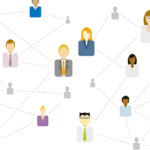Americans are making strides in Internet usage among groups of people who have historically been known for their offline status. According to the latest data from 2015 released yesterday by the National Telecommunications & Information Administration, senior citizens increased their Internet usage from 51 to 56 percent between 2013-2015, while children saw an even larger spike, jumping from 56 to 66 percent during the same time period.
The digital divide is also shrinking, albeit slowly, for groups of Americans with education up to a high school diploma. African Americans, Hispanics, and American Indians and Alaska Natives also increased their online activities by several percentage points.

The big take away from the study seems to be that Internet usage among segments of the population that are more likely to go online, such as white Americans, those with a college degree and adults between the ages of 25-44, have remained relatively steady with little to no increases. Meanwhile, groups of Americans who have generally faced difficulties in gaining online access, whether due to low educational attainment, economic status or age, are gradually making headway in the digital world.

NTIA also points out that several shifts in the technology age have led to Internet usage becoming a much more individual activity in recent years, thanks to the widespread availability of smartphones, Wi-Fi, mobile broadband and various connected devices. While the organization used to focus its research on Internet usage in the home, now it primarily looks at online activity among individuals from a range of locations.
While we still have a long way to go to close the digital divide between U.S. demographic groups, the shift towards mobile devices has given a hand to those who have typically been left behind by technology in the past.
Figures 1 and 2 from NTIA

